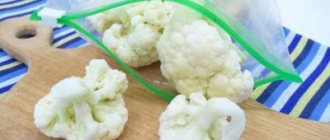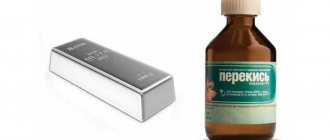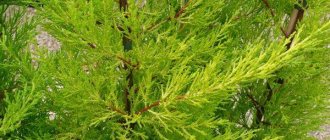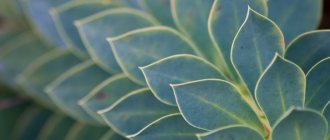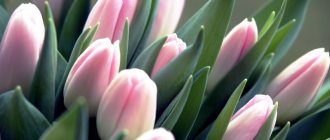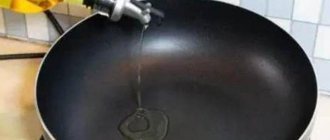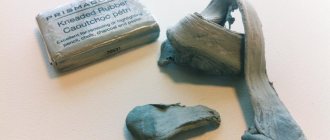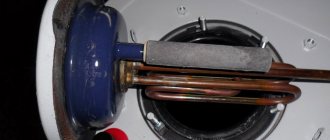In this article you will learn about the conditions for caring for anthuriums at home and transplanting a young anthurium after purchase.
House Anthurium is a special plant brought to us from countries with a hot, humid tropical climate. In addition, the anthurium flower in its natural environment often grows not even on the ground, but on tree branches, using the bark as a nutrient medium. You should take all these features of anthurium into account when caring for it at home. Below we will provide brief recommendations on how to care for anthurium in summer and winter, how to water anthurium, how to properly replant anthurium and other information necessary for every anthurium grower.
After purchasing an anthurium, check the soil moisture
As soon as you receive a parcel with anthurium or buy it in a store, check the soil moisture. The shipment may take several weeks and the soil of the plant may dry out completely along the way. In stores, too, they do not always pay due attention to the plants and often dry them out or, on the contrary, flood them, so that they begin to hurt and rot. Often anthuriums brought from abroad are in transport soil (temporary), which must be replaced after purchase. If you bought an anthurium in our nursery, you do not need to change the soil, but you must water it, since when sending anthurium by mail, we deliberately do not water it for several days. A humid environment in the absence of light can provoke root rot.
Possible mistakes
The following mistakes should be avoided during transplantation:
- incorrectly selected soil;
- dense, not loose soil;
- careless handling of the plant, especially its roots, during transshipment;
- a bad place for a flowerpot with drafts, lack of light and humidity;
- excessive or insufficient watering;
- frequent application of fertilizers;
- irregular transplants, change of nutrient soil.
Anthurium is very attractive, but needs care and proper care. It is especially important to pay maximum attention to the roots of the plant during transplantation, since they are very fragile. For good flowering of anthurium, you should carefully choose a flowerpot and high-quality soil.
How to determine when to water anthuriums
The need for watering can be easily checked by weight; if the pot is too light, then most likely the soil is completely dry. You can check it in another way, for example, stick a wooden stick into the ground or just use your finger. The anthurium needs to be watered when the soil in the pot dries out more than halfway. Follow this rule: In order not to “flood” the anthurium, the soil in the pot should dry almost completely between waterings. You can water abundantly, but be sure to drain the remaining water from the pan. Stagnant moisture at the bottom of the pot is the worst “enemy” of anthurium. Although this plant lives in hot and humid climates, its roots grow in a loose and breathable substrate, which consists of pieces of bark, small pebbles, moss, etc.
Video on how to water anthurium.
Diseases and possible pests
Anthurium is rarely affected by disease. All problems with his health often appear due to improper care. It is enough to restore the temperature and light conditions, adjust the humidity and watering for the plant to be revived.
Pests that settle on a flower can cause a lot of trouble.
| Pest | Signs of appearance | Treatment |
| Aphid | The leaves dry out and the plant grows slowly. They settle mainly on the underside of the leaf blade. | Treat the stems and leaves of anthurium with a special insecticide against the parasite. |
| Shields | Beige or brown tubercles appear on the leaves. Easily separated from the surface with a wooden stick. | Water the plant with a solution of a systemic insecticide, for example, Aktara. The substance will be absorbed into the sap of the plant and enter the body of the parasite, thereby neutralizing it. |
| Spider mite | On the surface of the plant you may notice cobwebs or punctures in the leaf blade. | First of all, wash the leaves of the flower with a soapy solution, and then treat with an acaricide. |
| Thrips (small midges) | Microorganisms that can cause a fungus or virus are left on the surface of the leaf plate. As a result, the leaves become pale yellow or white. | Treat the bush with special products. Additionally, sticky traps can be installed. |
| Whiteflies | Butterflies are very easy to spot. They affect the leaf plate, as a result of which the leaves become deformed and lose color. | Treat the plant with special insecticides. |
Anthurium care after purchase
After purchasing an anthurium (or receiving a parcel), do not rush to transplant it into a new pot. The plant tolerates a long road or a long stay in the store (base) very poorly. And, if after purchasing you immediately replant it, you will increase the stress state of the anthurium, its leaves will begin to turn yellow and darken, and sometimes the plant may even die. Let the anthurium stand in your home in a warm, lit place (out of direct sunlight) for a couple of weeks. Water it with settled or rain warm water, spray the leaves every day. You can’t spray flowers, they will get stained! Wipe its leaves on both sides with a damp sponge to remove dirt and bacteria. And only after 2 - 3 weeks of adaptation to the new room conditions can the anthurium be replanted.
Caring for anthurium after purchase. What conditions need to be created for anthurium at home.
What it is?
Anthurium is a genus of evergreen plants that belong to the Araceae family .
There are species with short stems and aerial roots, as well as species with long vines. The leaves are all fatty, juicy, and come in different shapes - cut or whole. The sizes of the leaf plates can also be different - some types reach 1 meter. The foliage is decorative - many of the species are velvety, with light veins or a satin tint. Anthurium flowers are bright, original in appearance, the buds are collected in dense inflorescences. After the buds fade, fruits similar to berries appear on the shoots.
Anthurium is a whimsical, capricious plant that requires constant maintenance of certain conditions. In total there are more than 500 varieties. This family is considered one of the most numerous.
This plant is also popularly called “male happiness.” It is often paired with spathiphyllum, which is called “female happiness.” It is believed that if these plants are present in the house, mutual understanding and harmony will reign in the family.
The plant does not release toxic substances into the air, but its juice in contact with mucous membranes can cause burns. And if swallowed, it can lead to poisoning.
Transplanting anthurium into a new pot
An anthurium division purchased at a nursery needs to be replanted, since it is in a temporary container (plastic cup) and after purchase you need to prepare the soil and a permanent pot. We use a plastic cup not only because of its low cost, but also to control the adherence of the cutting. The appearance of new roots is clearly visible through the transparent walls.
Video of anthurim transplantation after purchase.
Anthurium needs to be replanted periodically as the root system grows. Until the age of five, the transplant can be performed every year, then every three years. When replanting, the roots are inspected; if there are any diseased or damaged roots, they are cut off and the sections are treated with crushed coal. For more information about transplanting anthurium, watch the video on our channel or the material in this article: Homemade anthurium: transplantation at home.
Soil for anthuriums
Regular soil from your garden cannot be used for anthurium. Buy special soil for aroid plants, but it’s better to make it yourself. We have an article and video on how to make soil for anthurium. But in short, you will need five components: high-moor peat, pine bark chips, perlite, charcoal and sphagnum moss. Learn more about how to make soil for anthuriums: Soil and peas for anthuriums.
Which pot is best for anthurim?
By placing a young small anthurium in a large pot, you create a too humid environment for it; in large peas, moisture evaporates less well. Plant the anthurium in a relatively tight pot; in such conditions it will feel better and, most importantly, the tightness stimulates its flowering instead of root growth.
When replanting, choose a pot that is slightly larger than before, 2-3 cm larger in diameter. You need to choose a plastic pot with soft walls to make it easier to pull out the root ball. In addition, thin walls warm up faster and the soil in the pot dries out better; moisture does not stagnate as much as in a ceramic pot. An anthurium pot must have holes in the bottom, and there must be a tray underneath to collect residual water. After all, the soil of the anthurium does not hold moisture well; most of it flows to the bottom. That is why dried anthuriums should not be watered, but soaked in a bucket of water. By the way, be sure to drain any remaining moisture from the pan.
Drainage
To prevent excess moisture from remaining in the soil, the bottom of the pot should have holes. In addition, the bottom of the planting container must be lined with a drainage layer (1.5-2 cm) consisting of available material. For this purpose you can use:
- gravel;
- pebbles;
- small crushed stone;
- brick chips, etc.
It is advisable to add a little charcoal to this composition to disinfect the soil. This component reduces the risk of developing fungal infections that cause root rot. Activated carbon tablets perform a similar function.
Caring for anthuriums in winter
In winter, watering the anthurium should be reduced and you can even lower the temperature a little, but not below plus 18 degrees. If pots with anthuriums are placed on a windowsill in winter, make sure that the leaves do not touch the cold glass, as the anthurium may get sick. Anthurium is a shade-tolerant plant, but the plant needs a lot of light. The light should be diffused, without direct sunlight, otherwise the leaves and flowers will lose their attractive appearance. In low light, anthurium does not grow or bloom!
When will the baby anthurium bloom?
A very small anthurium plant (baby) will bloom no earlier than in three years. Consider this when choosing the size of anthuriums.
In this video you will see what an anthurium flower, which is sometimes called a male anthurium flower, looks like. The video shows the flowering of 10 varieties of anthurium.
In this video we will give advice on which pot to choose for anthuriums, including which pot is suitable for growing orchids.
Have you bought an anthurium flower or are you going to buy a male happiness flower? Be sure to first study the recommendations for caring for anthuriums at home. In this video we have collected basic recommendations for caring for anthuriums.
2.Description
Anthurium is a perennial evergreen herbaceous plant that forms a low stem . The leaf petioles are long and thin.
The leaves are dark green, glossy, heart-shaped, with deep leaf veins diverging from the base. In some varieties of anthurium, the leaf veins are highlighted in a lighter shade. The edges of the leaf plates are solid.
During the flowering period, plants form low thin peduncles , on top of which there are inflorescences - cobs with small yellow, orange or greenish flowers.
The main decoration of plants during the flowering period are the spathes surrounding the inflorescences. In different varieties, the bedspreads can be colored red, pink, purple, greenish or white.
Height of indoor anthurium . Up to 50 cm ; more compact forms of house plants have modest sizes and reach 30 cm; anthuriums develop slowly. Tall stems may need to be trimmed.
↑ Up,
Buy a rooted baby or flowering anthurium
You can buy one blooming Anthurium, depending on the variety and age of the flower, in the range from 600 to 700 rubles. A rooted shoot (baby) of anthurium can be purchased from 350 rubles. If the cost of ordered indoor flowers (plants) is 3,000 rubles or more, then we add one plant for free. The minimum amount for any purchase is 1000 rubles.
We do not send plants by cash on delivery!
For the availability of anthuriums in our nursery, see the “Anthurium Catalog” section.
When choosing anthuriums, instead of the name, you can indicate the number of the flower in the photo.
Catalog of anthuriums: photos and descriptions.
How to apply for the purchase of anthuriums
It is advisable to send the application in writing to [email protected] We can accept applications by phone 89379684236 (Megafon) from 10.00 to 20.00 (Moscow time).
In your application, indicate the names (or numbers) of the selected anthuriums and the desired price of the plant (division size). The letter must include your full name, postal address with zip code and mobile phone number. The application is not binding; you can adjust (add or remove plants) and even refuse the order. Please note that the quantity of some varieties of anthuriums is limited. After receiving your application, we will contact you by phone to clarify the order details, cost, and delivery. After agreeing on the order, we will provide payment details (100% prepayment only) and send your plants by Russian Post, from the beginning of spring to the end of autumn, depending on the region.
Other plants:
Homemade anthuriums: description and care
Have you bought anthurium seedlings in our nursery? Be sure to read this material. In this article you will find a description of anthurium and recommendations for caring for, growing, and replanting them at home.
Anthuriums - video on care and cultivation
Watch the videos, which explain many of the problems with growing anthuriums and provide recommendations for care, watering and propagation.
Anthuriums - problems with keeping anthurium in winter
In winter, the anthurium is severely lacking in light, and therefore, due to lack of lighting at home, the leaves of the anthurium begin to turn yellow and a number of other defects appear.
Chlorosis of plant leaves
Chlorosis is most common in hibiscus and hydrangeas. If you grow them, you definitely need to know how to treat chlorosis.
Buy homemade hibiscus
In our nursery you can buy indoor hibiscus of different varieties. Hibiscus seedlings are sold in the form of rooted cuttings.
Midges, fungus gnats, aphids and whiteflies in plants
Midges, fungus gnats, aphids and whiteflies on flowers. How to get rid of them in indoor flowers and plants?
What substrate is needed for a phalaenopsis orchid?
The orchid needs to be replanted periodically. But the phalaenopsis orchid needs a certain soil. How to make a substrate suitable for replanting an orchid.
